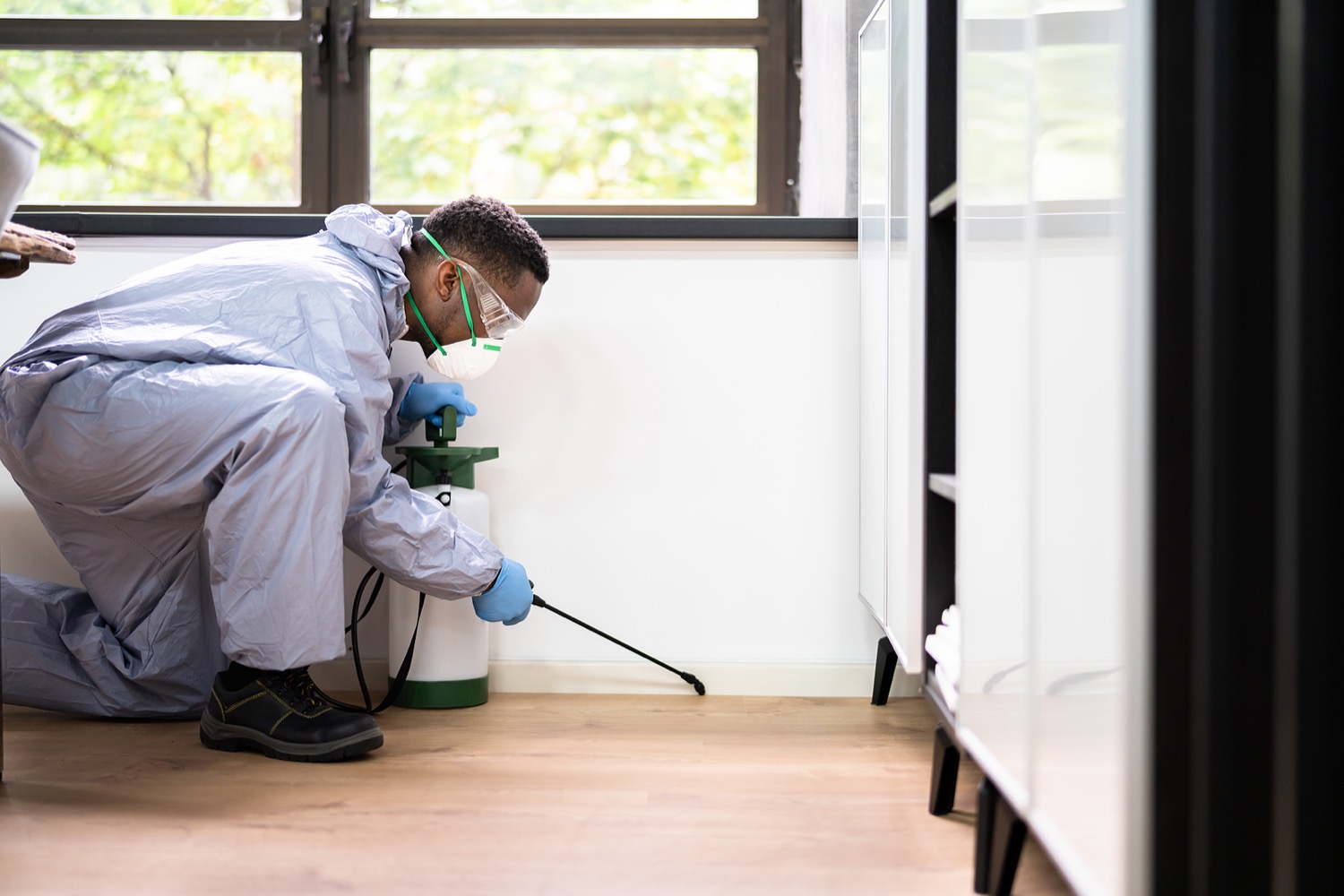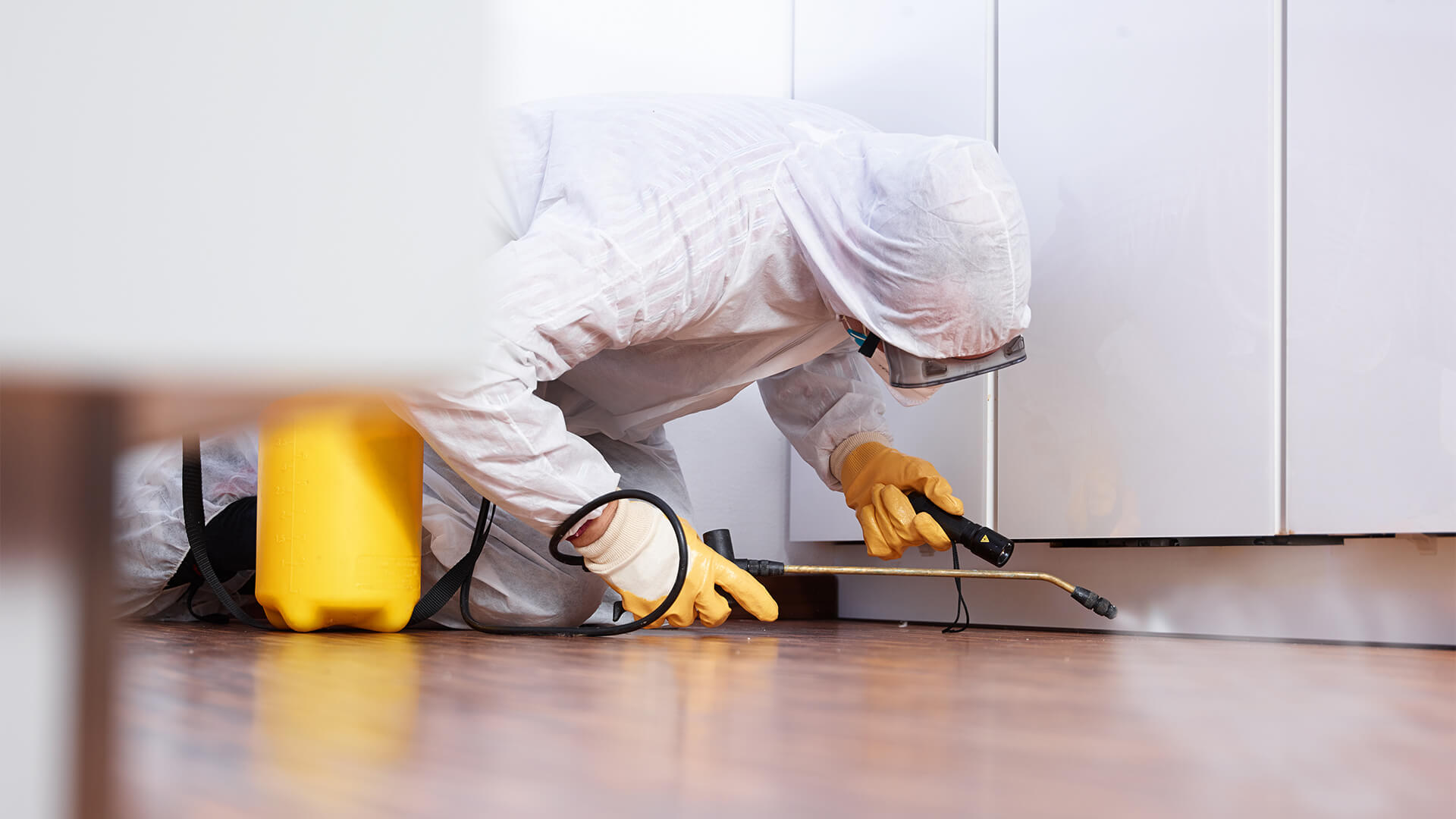High Quality A1 Pest Control Services Charlotte - Safeguard Your Home
Wiki Article
Bed Insect Therapy Break Down: Contrasting Chemical Vs. Non-Chemical Solutions
In the world of bug control, especially when managing the consistent issue of bed bugs, the selection in between chemical and non-chemical treatment services can be a critical one. Both methods use distinctive advantages and disadvantages, affecting elements such as efficiency, safety and security factors to consider, and total cost. By analyzing the nuanced information of each approach, a more clear understanding of which path to pursue in attending to a bed pest problem can be achieved.Effectiveness of Chemical Therapies
Chemical treatments for bed bug infestations have actually been commonly identified for their quick and powerful effectiveness in getting rid of these parasites. When thinking about the effectiveness of chemical treatments, it is essential to comprehend that they can supply a comprehensive and fast remedy to a bed pest trouble. Expert pest control experts typically count on pesticides to target bed insects at various stages of their life process, including grownups, eggs, and nymphs. These chemicals typically function by interrupting the bed bugs' nerve system, resulting in paralysis and eventual fatality.Moreover, chemical therapies have the advantage of offering recurring effects, meaning that they can proceed to eliminate bed bugs even after the first application. This residual activity is particularly helpful in combating any type of potential re-infestations. Furthermore, the rapid action of chemical treatments can bring alleviation to individuals dealing with extreme bed bug infestations, allowing them to restore control of their space rapidly.
Safety Worry About Chemical Solutions
When using chemical options for bed insect therapy is making certain the safety of occupants and the setting,One essential aspect that needs cautious consideration. While chemical treatments can be effective in getting rid of bed bugs, they may posture risks otherwise handled correctly. One of the primary safety worry about chemical remedies is the possible injury they can trigger to human wellness. Direct exposure to certain chemicals made use of in bed insect treatments can lead to respiratory issues, skin irritability, or other adverse responses, particularly in individuals with pre-existing problems or sensitivities. Additionally, inappropriate application or dose of chemical pesticides can cause harmful residues remaining in the cured area, positioning lasting health and wellness dangers to occupants.Furthermore, the ecological impact of chemical options is another considerable factor to consider. Some pesticides made use of in bed insect treatments might be damaging to advantageous pests, wildlife, and ecosystems if they seep right into the dirt or water systems. It is vital to utilize chemical therapies deliberately, following security standards, and considering less hazardous choices to reduce these risks and guarantee the safe and efficient management of bed bug invasions.
Advantages of Non-Chemical Strategies
Thinking about the prospective safety problems and ecological effect associated with chemical remedies for bed insect therapy, discovering non-chemical methods presents an encouraging option with numerous distinctive benefits. Non-chemical therapies are ecologically friendly, as they do not contribute to air or water pollution, making them a lasting choice for bug control.Furthermore, non-chemical solutions can be efficient in targeting bed bugs, consisting of hard-to-reach areas where chemical therapies may not penetrate. Approaches such as heat therapy, vacuuming, steam cleansing, and mattress coverings offer extensive eradication without the usage of damaging chemicals. In addition, non-chemical methods can my response be much less turbulent, requiring very little prep work and enabling quicker reentry right into treated areas. Overall, going with non-chemical bed bug therapy approaches not only prioritizes safety and security and environmental management but likewise makes sure effective and detailed bug control.
Limitations of Non-Chemical Treatments

In addition, non-chemical therapies usually require several applications to attain effective removal. This can be taxing and may not constantly assure full elimination of all bed insects and their eggs, particularly in surprise or hard-to-reach locations.
Additionally, the success of non-chemical treatments heavily counts on correct application and thoroughness, which can be challenging for individuals without professional expertise. Inadequate application of non-chemical methods might cause insufficient removal, causing consistent problems and the need for additional treatments.
For that reason, while non-chemical treatments have their advantages, it is vital to acknowledge these constraints and consider them when identifying the most efficient technique for taking care of bed bug infestations.
Cost Comparison: Chemical Vs. Non-Chemical Options
Offered the constraints linked with non-chemical therapies, a crucial facet to evaluate in the context of bed bug monitoring is the price contrast web link between chemical and non-chemical options. Chemical treatments normally include the application of insecticides by professionals, which can range from $250 to $900 per room, depending on the seriousness of the invasion and the size of the area to be treated. In contrast, non-chemical therapies like warmth therapy or steam can be more expensive, with prices ranging from $1,000 to $6,000 for an entire home. While the first price of chemical therapies may appear reduced, several treatments may be called for to totally remove the infestation, possibly boosting the overall price. On the various other hand, non-chemical options might provide a more sustainable and environmentally friendly solution, although they can be cost-prohibitive for some individuals. Inevitably, when thinking about the price of bed bug therapy options, it is necessary to weigh the ahead of time expenses versus the efficiency and long-term sustainability of the selected approach.Verdict

Thinking about the possible safety worries and ecological impact associated with chemical options for bed pest treatment, checking out non-chemical techniques look here offers a promising alternative with a number of distinct benefits.Given the restrictions connected with non-chemical therapies, an essential element to review in the context of bed bug management is the expense comparison between chemical and non-chemical choices. In contrast, non-chemical therapies like warmth treatment or vapor can be more expensive, with expenses ranging from $1,000 to $6,000 for an entire home. While the preliminary expense of chemical therapies might appear lower, several treatments may be needed to completely get rid of the infestation, possibly increasing the total price.In verdict, when contrasting chemical and non-chemical bed pest therapy choices, it is essential to consider effectiveness, safety, advantages, constraints, and expense.
Report this wiki page